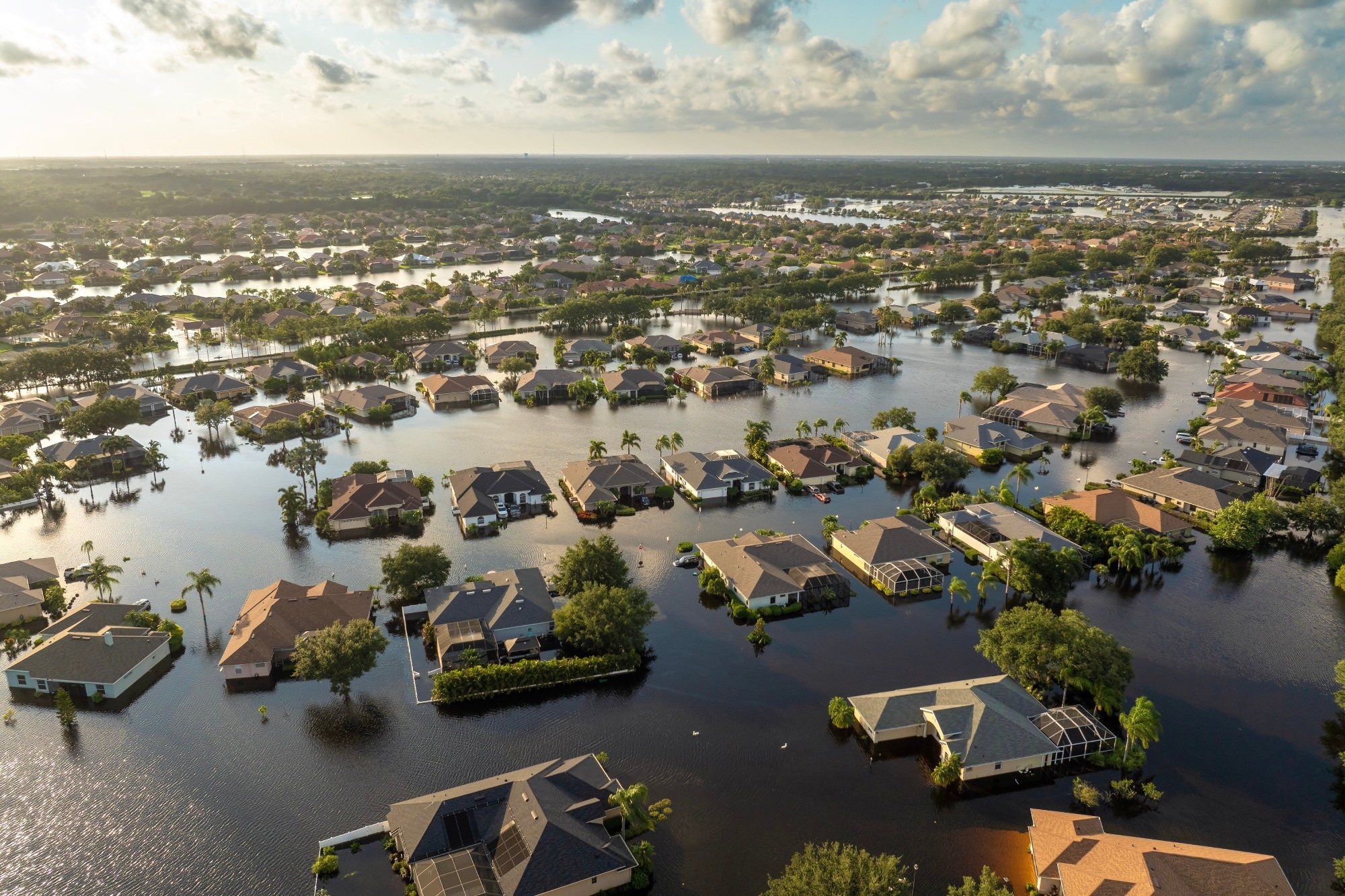Discover how groundbreaking AI technology predicts floods with precision, empowering vulnerable communities and reshaping global disaster resilience efforts.
 Article: How we’re helping partners with improved and expanded AI-based flood forecasting. Image Credit: Bilanol / Shutterstock
Article: How we’re helping partners with improved and expanded AI-based flood forecasting. Image Credit: Bilanol / Shutterstock
In an article posted to Google’s The Keyword blog, Yossi Matias, Vice President and head of Google Research, presented Google's artificial intelligence (AI)-driven advancements in flood forecasting. These advancements aim to help governments, non-governmental organizations (NGOs), and communities enhance climate resilience. They highlighted scalable models capable of delivering near real-time flood predictions, which currently reach 700 million people across 100 countries, a significant increase from 460 million and 80 countries previously.
The article also introduced a range of model improvements, including an expanded dataset trained with three times as many locations, a new weather forecasting input, and a more robust model architecture. These improvements extended forecast accuracy to a seven-day lead time, making data more accessible through a new application programming interface (API) and the Google Runoff Reanalysis & Reforecast (GRRR) dataset. These resources, including historical flood data spanning back to 1981 and covering forecasts and alerts, aimed to support researchers and experts globally in understanding flood patterns and mitigating impacts, providing valuable information even in data-scarce regions via virtual gauges.
Background
Floods cause significant loss of life, displacement, and economic damage worldwide each year. Addressing this urgent need, Google Research developed an AI-based global flood forecasting model to deliver near real-time data and improve climate resilience. Previous flood forecasting methods were limited by a lack of physical sensor coverage, constraining their geographic reach, data reliability, and accuracy. Early models provided limited, short-term forecasts in select regions, typically achieving a five-day lead time.
To address these gaps, Google Research’s expanded flood forecasting model now covers over 100 countries and reaches 700 million people, including remote regions where physical sensors are absent. The model incorporated advances in the quantity of labeled data, training at three times more locations, and the addition of weather forecasting models to achieve greater predictive accuracy, with a seven-day lead time matching the reliability of previous five-day forecasts.
Global Expansion of AI-Driven Flood Forecasting
Google expanded its AI-based flood forecasting model to cover over 100 countries, reaching 700 million people — a significant increase from 460 million previously. The model’s improved accuracy is underpinned by a more robust architecture, which integrates new weather forecasting inputs and additional training data from diverse global locations. Flood forecasts are shared via Google platforms, including Search, Maps, and Google Flood Hub, to help communities better prepare for potential floods.
In addition to public information, Google is now providing researchers and experts with more access to flood forecasting data through its GRRR dataset and an upcoming API. The API pilot program, now open for partner signups, will allow researchers to access detailed hydrological forecasts and flood statuses, including predictions in data-scarce areas. This API, combined with the GRRR dataset, features over 250,000 “virtual gauges,” enabling flood forecasting in regions without physical sensors. These virtual gauges provide reliable forecasts for over 150 countries, aided by historical datasets reaching back to 1981, supporting analysis of long-term flood impacts.
AI-Driven Climate Action Worldwide
Google’s AI-powered flood forecasting models are aiding communities, authorities, and humanitarian organizations worldwide in crisis response and climate action. During severe flooding in Rio Grande do Sul, Brazil, Google partnered with the Geological Service of Brazil (SGB), expanding Flood Hub coverage to over 200 locations within the state. This real-time data supported public authorities and residents in developing effective crisis plans.
Beyond Brazil, flood forecasts empowered aid groups like World Vision Brazil to provide rapid assistance, including essentials like water, food, and bedding, within two days. Additionally, across Africa and India, Google’s partnerships with humanitarian organizations scaled the impact of flood forecasting technology, delivering vital, life-saving information.
These efforts align with the UN’s Early Warnings for All initiative, reinforcing Google’s mission to enhance global climate resilience by providing timely and accessible flood information to governments, NGOs, and at-risk communities worldwide.
Conclusion
In conclusion, Google's AI-driven flood forecasting model now provides near real-time predictions to 700 million people across 100 countries, significantly improving climate resilience. Advancements in model accuracy, including a seven-day lead time achieved through robust architecture and improved datasets, address previous forecast reliability and coverage gaps.
The inclusion of over 250,000 virtual gauges and historical datasets from 1981 enhances data access for researchers globally, even in regions lacking physical sensors. The expanded model supports researchers and humanitarian organizations, such as those in Brazil, Africa, and India, helping them respond to floods with life-saving assistance. By aligning with the UN’s Early Warnings for All initiative, Google underscores its commitment to leveraging AI for climate action, providing accessible and critical data to mitigate the impacts of devastating floods worldwide.
Journal reference:
- Nearing, G., Cohen, D., Dube, V., Gauch, M., Gilon, O., Harrigan, S., Hassidim, A., Klotz, D., Kratzert, F., Metzger, A., Nevo, S., Pappenberger, F., Prudhomme, C., Shalev, G., Shenzis, S., Tekalign, T. Y., Weitzner, D., & Matias, Y. (2024). Global prediction of extreme floods in ungauged watersheds. Nature, 627(8004), 559-563. DOI: 10.1038/s41586-024-07145-1, https://www.nature.com/articles/s41586-024-07145-1